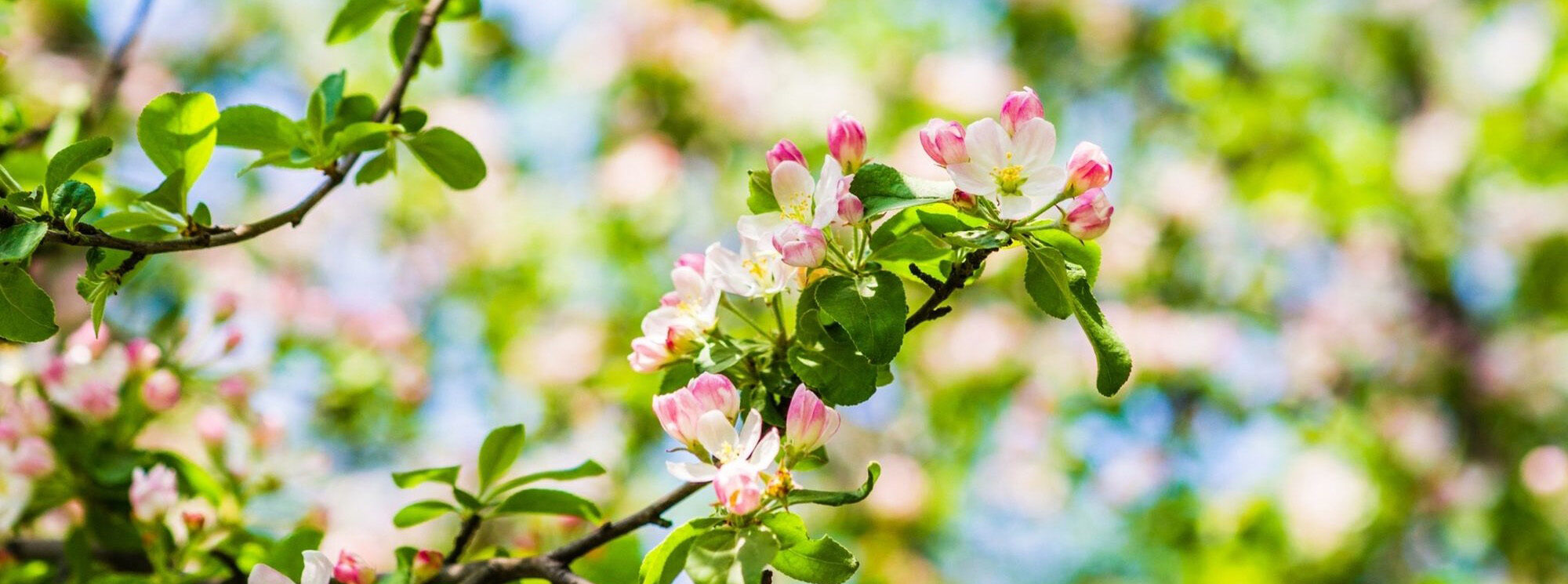Related to culinary apples, crab apples are small to medium-sized trees, bearing masses of spring blossom followed by small, apple-like fruits in August and September. These trees start blooming at a young age, often as early as two or three years old, making them an excellent choice for those seeking quick results. Crab apple trees can effectively pollinate various apple varieties nearby. They have a more extended flowering season compared to culinary apples and generate up to ten times the amount of pollen. So, if you have at least one crab apple tree neither you nor your neighbours need worry about the pollination of your culinary apples.
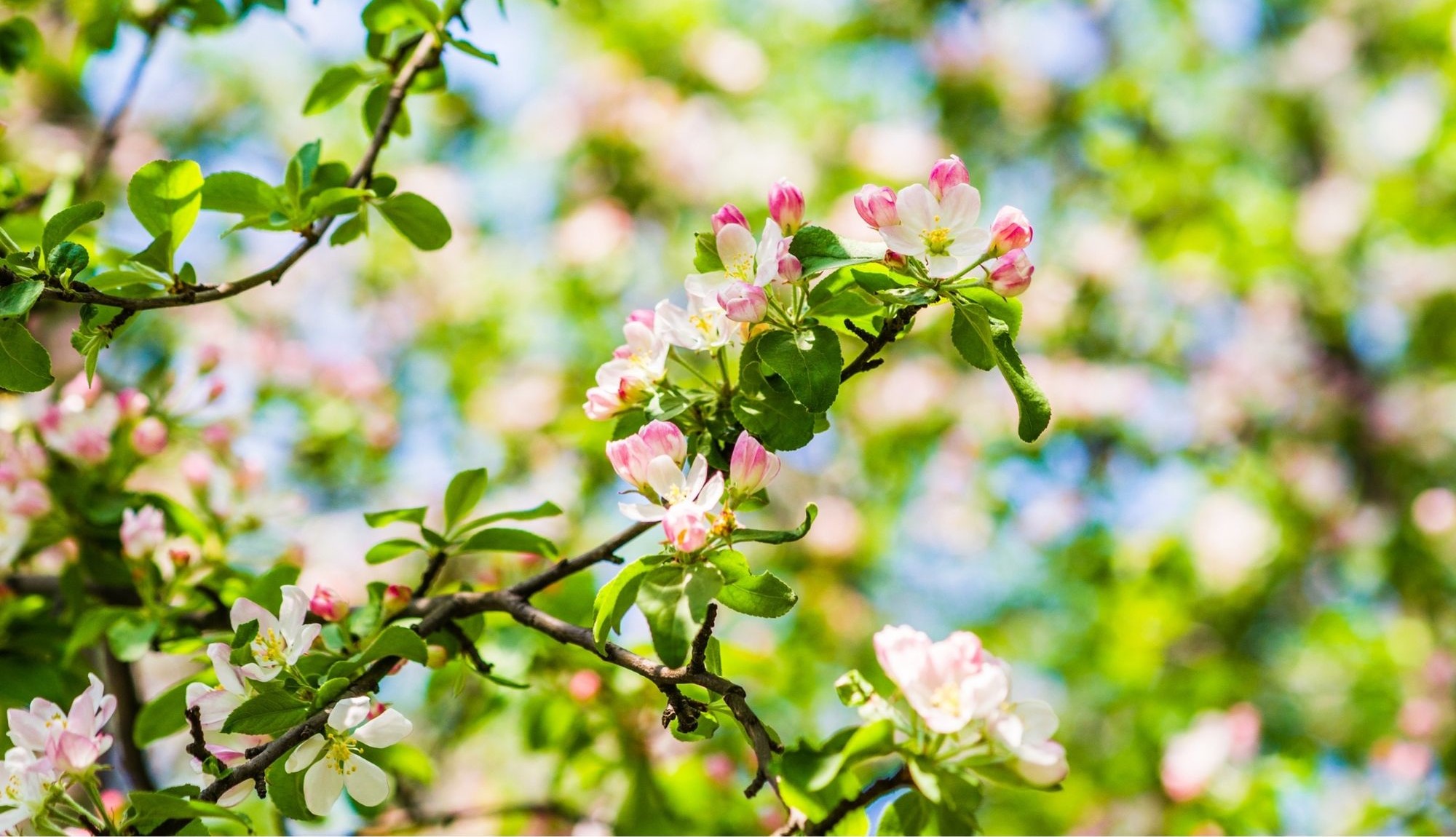
They are highly sought after in gardens due to their ornamental value. Additionally, they serve as traditional pollination partners for apple trees and, due to their extended flowering period, can pollinate multiple culinary apple varieties. This makes them ideal for small garden spaces.
Crab Apple Variety: Crab apples are cherished by wildlife, attracting bees for pollination in spring and providing a food source for birds and small mammals in autumn. Their blossoms can be either single (preferred by bees) or double. These trees produce fruits of different sizes, ranging from 10mm to 5cm, and display a spectrum of colours, including yellow, orange, red, and purple. The autumn crop of colourful crab apple fruits often lasts well into the winter, as birds seem to leave them until last.
Culinary Uses: Many crab apples yield edible fruit that can be used in various ways, but the most common is making crab apple jelly. Their high pectin content aiding the setting process. While raw crab apples are sour, larger varieties are excellent for making jellies, preserves and even adding to cider.
Some gardeners might not be aware of the diverse range of crab apple trees available, offering options for blossom and fruit colours. It’s important to choose the right crab apple for your garden by considering its growth requirements, eventual size, and fruit type, especially if you intend to use them in cooking. In this article, we’ll explore ten of the best crab apple tree varieties suited to the UK climate.
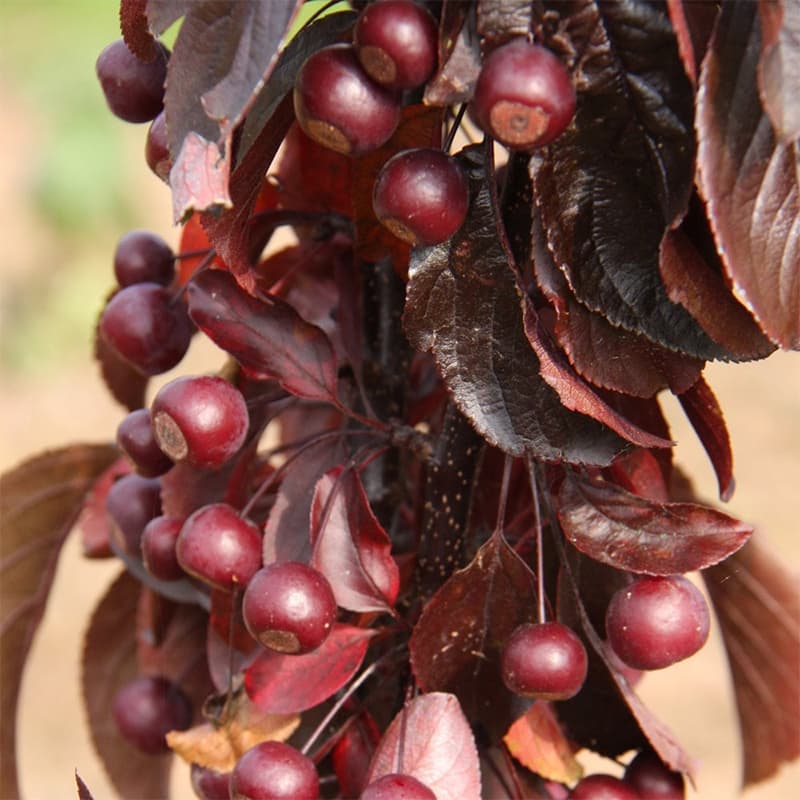
Malus toringo ‘Aros’: A relatively new dwarf variety to 3m x 1m with dark purple foliage and dark pink blossoms. Its maroon fruits are perfect for smaller spaces or even growing in pots. Aros boasts the accolades of Best in Show at the UK National Plant Show in 2017 and the RHS Award of Garden Merit (AGM).
Malus x floribunda: With a spreading habit, this variety offers fantastic blushed white petals opening from crimson buds and long-lasting fruit that provides food for birds during winter. 4m x 3m
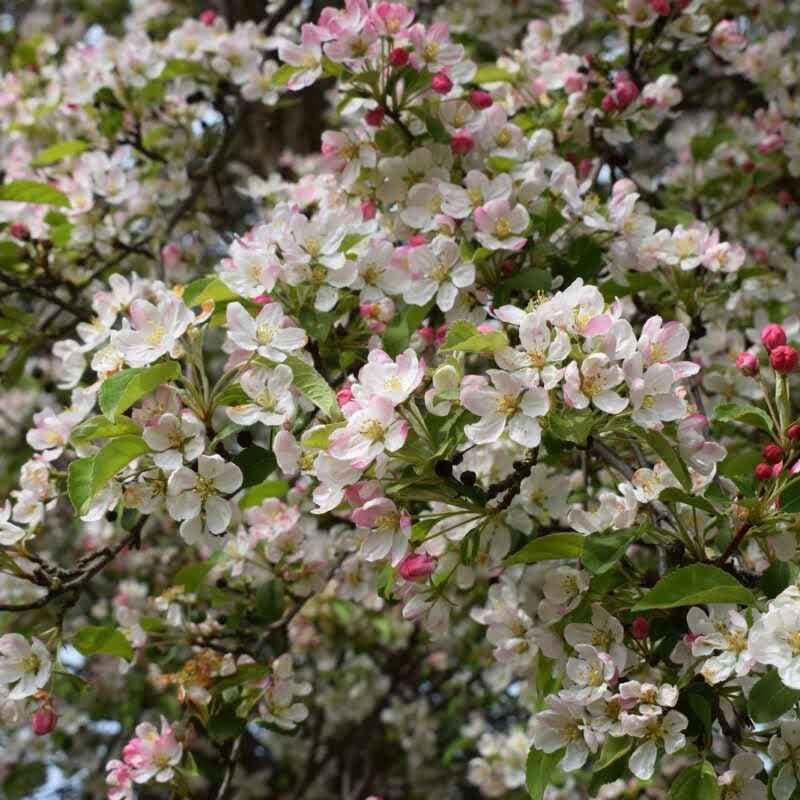
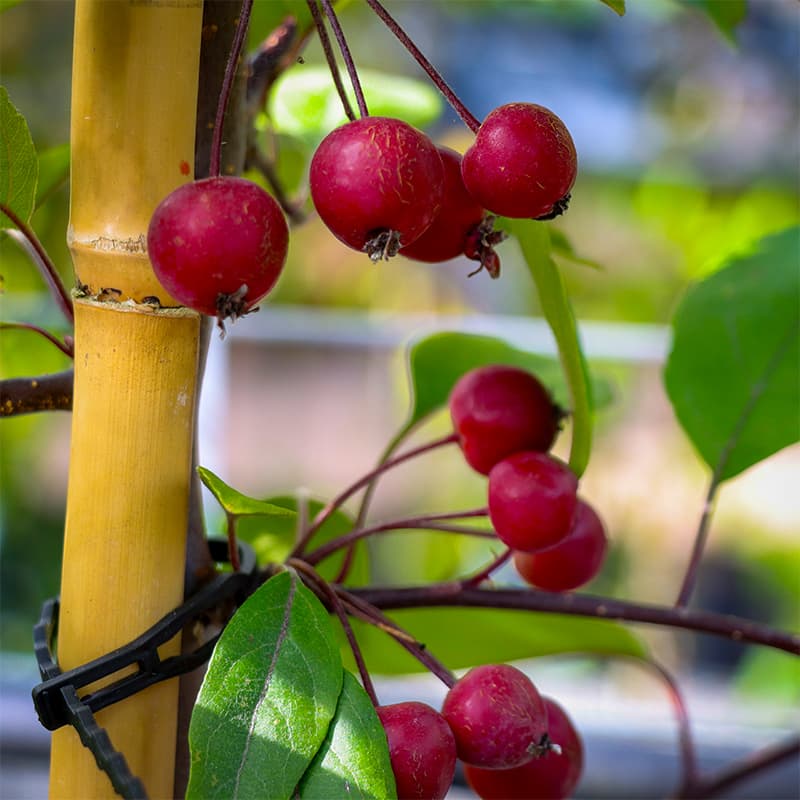
Malus × moerlandsii ‘Profusion’: Known for its dark purple-pink blossoms in spring and cherry-like reddish-purple fruits loved by birds in winter. A fast growing vigorous tree. 4m x 3m
Malus × purpurea ‘Crimson Cascade’: This compact weeping variety stands out with dusky pink blossoms, purple foliage, and deep red-purple autumn fruits. 4m x 2.5m
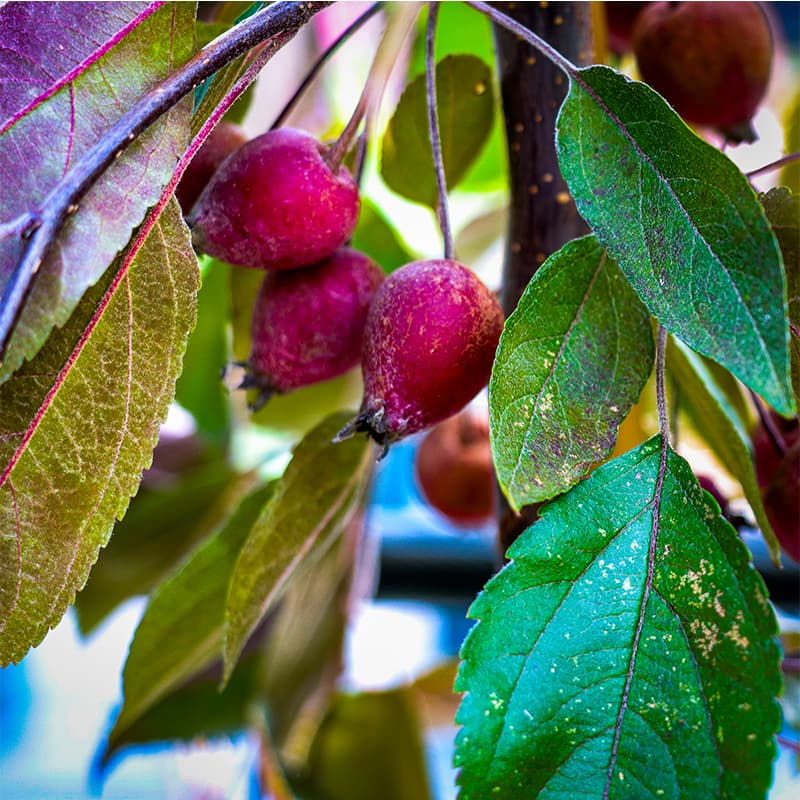
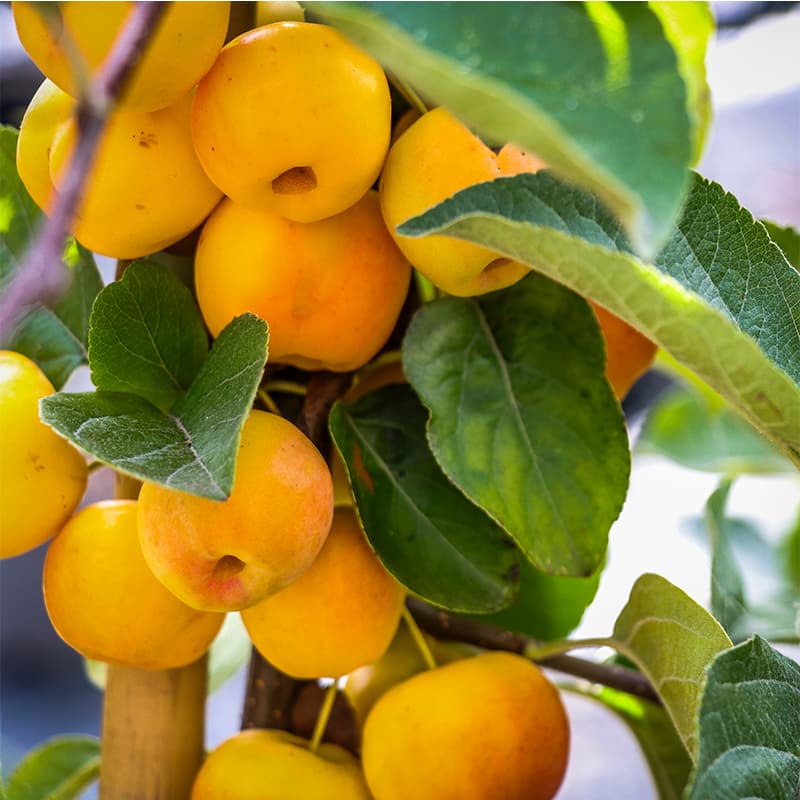
Malus ‘Butterball’: Perfect for making Crab Apple Jelly, this spreading tree with pink buds that open to blushed-white flowers produces golden-yellow fruits with reddish tints. 4m x 3m
Malus ‘John Downie’: Considered one of the finest crab apples, it’s excellent for jelly making. It features large plum-like apples and white blossoms loved by bees in spring. 4m x 3m
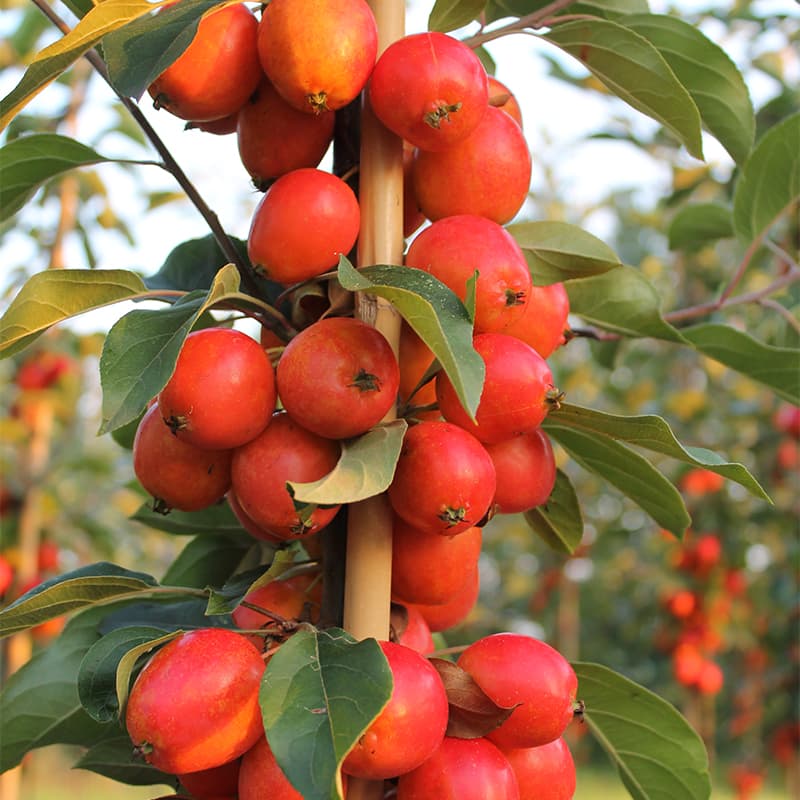
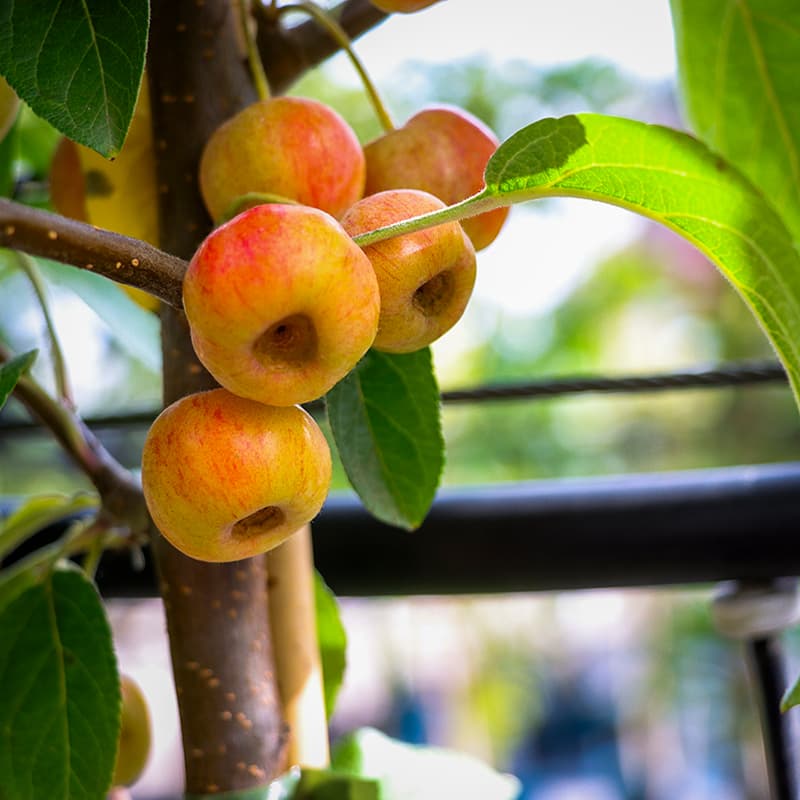
Malus ‘Evereste’: Perfect for small spaces due to its conical upright nature, this tree delights with large white blossoms and crab apples that persist well into winter. 4m x 4m.
Malus toringo ‘Scarlett’: Known for its outstanding autumn colour, this tree offers pink spring flowers, long-lasting purple fruits, and leaves that turn fiery orange and yellow in autumn. 2.5m x 3m
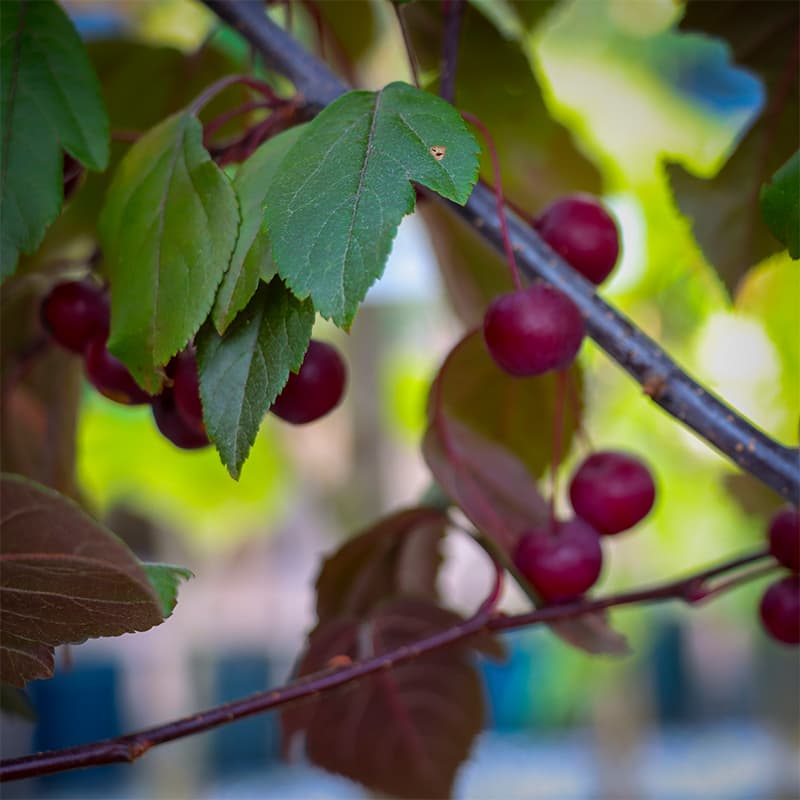
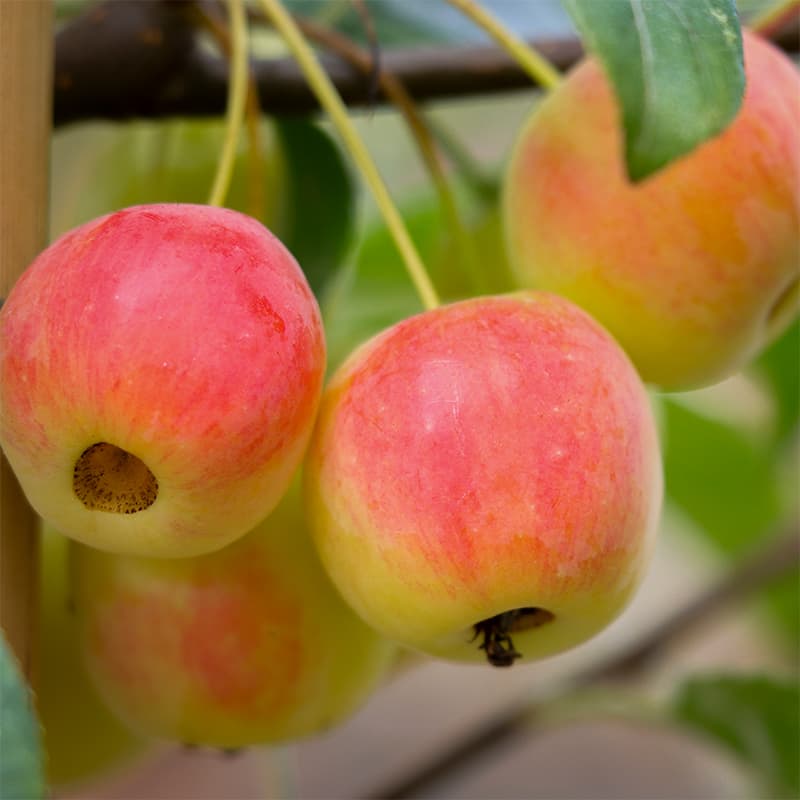
Malus x robusta ‘Red Sentinel’: Fragrant blushed white spring flowers, glossy deep-red fruits, and yellow autumn leaf colour make this tree a standout choice. One of the best for birds. 4m x 3m
These crab apple trees will not only enhance the beauty of your garden but also contribute to the local ecosystem by attracting pollinators and providing food for birds. Whether you’re looking to make crab apple jelly or simply enjoy their vibrant blossoms, there’s a crab apple tree for every garden in the UK. So, choose the one that suits your space and preferences, and watch your garden flourish with these beautiful trees.
To complete this article here is Jenny’s delicious recipe for Crab Apple Jelly:
Ingredients:
1.5kg (3lb 3oz) crab apples
Juice of 1 lemon
½ tsp ground ginger
½ tsp ground cinnamon
500g (1lb 2oz) granulated sugar for each 600ml (1pint) of juice.
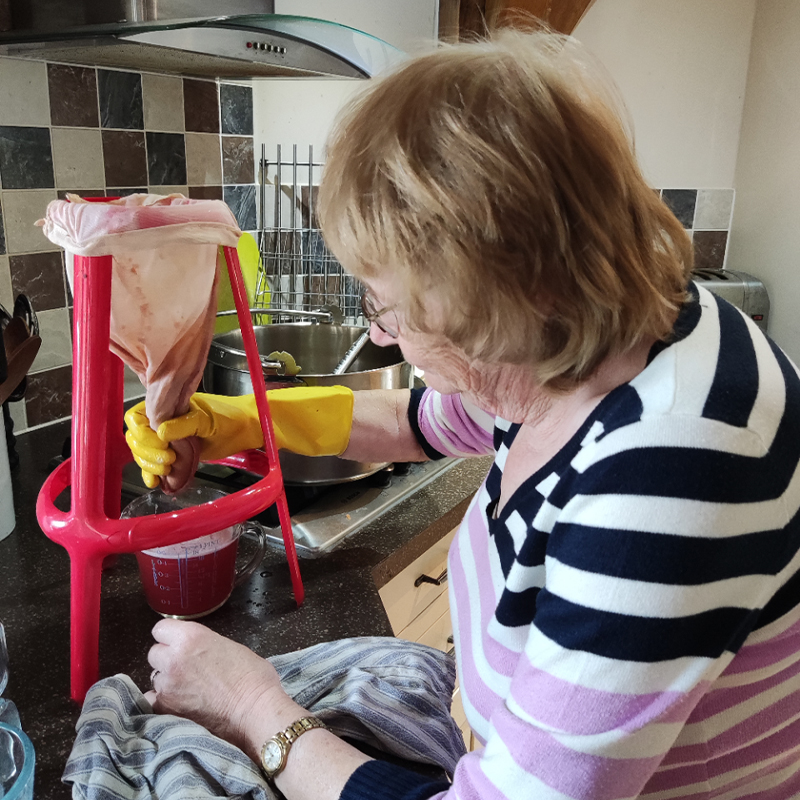
1. Sterilise your jars
2. Cut away any bruised or bad parts of the apples. Put the apples and 1.2 litres (2 pints) of water in a large preserving pan with the ginger and cinnamon. Bring to the boil then cover and simmer for 30-40 minutes. The apples should be reduced to pulp.
3. Mash the reduced apples then spoon them into a jelly bag on a jelly bag stand or a sieve lined with muslin. Place a container below and leave for 6-12 hours for the juice to drip through. If you are not able to wait that long, spoon the jelly into the bag in batches and squeeze the bag to extract all the juice. Remember that it will be hot – I wear a rubber glove to protect my hand but it saves a lot of time. If you prefer a perfectly clear jelly don’t squeeze but leave overnight to drip.
4. Put your sterilised jars into an oven set at the lowest level and put a saucer in the freezer or fridge ready for the setting test.
5. Measure the juice and weigh out the correct amount of sugar. Put both into the preserving pan and bring slowly to the boil stirring until the sugar has dissolved. Bring to a full rolling boil for 5 minutes, turn down the heat and test if it has reached the setting point*. If it hasn’t return to a rolling boil and test again every minute until it reaches setting point.
6. Pour into the hot sterilised jars, seal and label. As the jars cool down the top of the lids will pop down to help keep them sealed.
Makes approx. 1kg or 2 ½ lbs of jelly. Keeps for 6-9 months. Refrigerate after opening.
*To test for setting point take the jelly off the heat, put a teaspoonful of the jelly onto the cold saucer from the fridge and wait for 30 seconds. Push it with the spoon. If it wrinkles up you have reached the setting point.

By our resident horticultural expert





